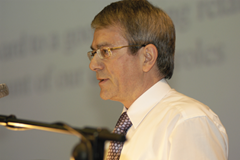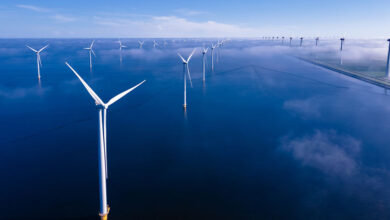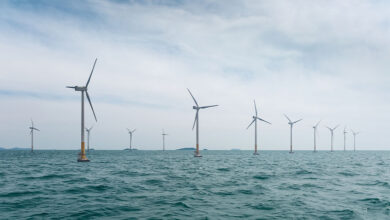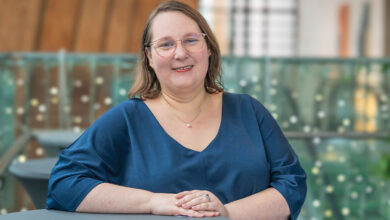Regulating energy: Michael Tutty
 Commission for Energy Regulation Chairman Michael Tutty focuses on the factors for good regulation and updates Owen McQuade on the commission’s current role, and on network capacity and security of supply which are key challenges for Ireland’s energy future.
Commission for Energy Regulation Chairman Michael Tutty focuses on the factors for good regulation and updates Owen McQuade on the commission’s current role, and on network capacity and security of supply which are key challenges for Ireland’s energy future.
“The first five years have flown by”, Michael Tutty remarks as he reflects on the changing state of the sector since his appointment to the Commission for Energy Regulation (CER).
“When I was taking the job, I thought that the energy sector was relatively simple from what I knew of it from outside but what I really like is that it is not simple at all. It is very complex, particularly the electricity system.”
Tutty was appointed in October 2005 and is enjoying tackling challenges which he never knew existed before. The Single Electricity Market (SEM) is the signature project in Irish energy and has been launched alongside increasing competition, not to mention the rising importance of renewables across the island.
Developing competitive markets tops his list of priorities as Chairman. He wants to “just focus on regulating the prices for the monopoly end” i.e. the networks. This can happen when sufficient competition finally develops in the household retail electricity and gas markets.
SEM has been the key element for developing competition in electricity: “What we had before the SEM was effectively a bilateral market where top-up and spill wasn’t working well at all. The SEM is working well.”
Tutty has received good feedback from participants and is pleased with the high level of new entrants, such as Spanish utility company Endesa.
“Seeing real competition happen at the domestic customer level in electricity is very good,” he continues. “We have facilitated this by making it easier for customers to switch from one supplier to another. We’re seeing it working now and working very well.”
“On the gas side, we hope that at the retail level we get similar competition going and we have the systems there for customer changing as well. In the higher reaches at industrial level, there is more competition; it is going well.”
While the commission is still involved in end-user price regulation for SMEs and households, it is now considering a roadmap on how to move on from that and will publish a consultation document in the autumn.
Common Arrangements for Gas – a work in progress – is a significant project but not as big as the SEM, which has a greater range of participants and issues.
“What we’re looking for there is to try and have a system where gas can flow freely between North and South without any barriers. And that will bring efficiencies and synergies over time. We’re glad to say that our Northern counterparts – NIAUR – are working with us on it and the two departments.”
A cost-benefit pilot study on smart electricity metering is also under way, with a similar study for gas to follow very shortly.
Safety and customer care are two new activities tasked to the CER. It supervises the regulation of electrical contractors and gas installers, a role which is outsourced after a public tender to two existing bodies for electricity which were previously undertaking this voluntarily and one new body on gas: “That, for the first time now means that only qualified people can install gas systems in your house.”
At a wider level, the CER is asking all participants in the gas market to draw up safety frameworks for gas pipelines and their use. Regulating safety is “quite different from economic regulation” but also is apparently a unique function among the continent’s energy regulators.
In customer care, regulation means trying to improve the information which the commission publishes to consumers on the whole market. No longer can the customer rely on ESB or Bord Gáis for all their knowledge.
The CER is considering whether to put price comparisons on its website so that people can choose between suppliers. Customers who have disputes with their suppliers can also come to the commission for adjudication.
Aside from these specific areas of work, Tutty clearly sees his overall priority as the quality of the commission’s work i.e. “maintaining the reputation of the CER as a respected organisation that makes proper decisions within our statutory remit in a fully transparent and consistent way, and maintaining our independence.”
SEM lessons
Asked about the main learning points from that experience, he acknowledges the scale of the operation but adds that the market will need to be refined and adapted over time.
“The main success was that it actually did get up and running and does work. There was a lot of work put into that – not only by the regulators but the industry itself – and to end up with a system that did actually work at the first attempt is very good. It will require adaptation over time. You won’t get everything right at the first go.”
Bidding code principles were adopted to ensure that the market cannot be manipulated by its dominant players but these will be kept under review to see when they can be relaxed. The detailed operation of the capacity payment mechanism will also be reviewed and the prospect of east-west interconnection – indeed between Ireland, Britain and France in the long term – throws up the potential for new challenges. The current gate closure in Ireland, for example, does not work well with the current British system.
“It will be a continuous process of adaptation and evolution. We wouldn’t want to try to change it radically in the short term. You need to get the market up and running and get people used to it.”
Suppliers can buy hedges over different periods and for different times of the year but liquidity in the market needs to develop further, including having hedges available continuously during the year. The CER’s contracting system works by directing ESB to issue contracts designed to reduce its dominance in the market and also offering voluntary, non-directed contracts. It wants to see other companies offering contracts as well.
“One good development this year was that a trading platform has been developed by a private company on which ESB’s non-directed contracts and Northern Ireland Electricity’s contracts are being offered,” he notes. “We would hope to see that developing in the future so that there is a much more liquid market.”
Security
The regulator’s hands are somewhat tied on security of supply as it cannot dictate what happens in a competitive market. However, he sees the CER playing a part by achieving integration with other markets “through greater interconnection and facilitating trade”. The market must also give the right signals to encourage the optimum type of plant.
Diversification in fuels and technologies is also followed closely by the commission, as a wider range of sources will reduce reliance on the more vulnerable ones.
“At the moment, the only conventional plants that people want to build are gas and the predominant renewable that people want to build is wind. So we look as if we’re going to have a predominance of wind and gas as our fuel sources,” he comments.
“Wind is variable so it’s not there all the time. To be too heavily dependent on gas is not good, but what else is there? This is one of the big questions for the future.”
A variety of answers are possible, such as coal with carbon capture and storage, other renewables or even nuclear power. The Corrib gas field and S
hannon LNG plant would aid gas security. Dependence on gas and little storage is, in his view, a bad combination.
Renewables
Regarding the 40 per cent renewable electricity target, Tutty is confident that current connection applications for wind will ensure that is reached and exceeded: “We have applications that go well beyond 40 per cent and our Gate 3 process is designed to get at least 40 per cent renewables on the system by 2020.”
He would like to see a greater mix of technologies and wonders whether the necessary networks can be built. Public unwillingness to accept new infrastructure means that planning permission is becoming more difficult to achieve “but if we’re not able to build the networks, we won’t be able to achieve the renewables target.”
Financing is also a challenge, given the current state of the economy but hopefully that will ease over time, he adds.
Some energy-watchers have been concerned that the price will be driven down so low by 40 per cent renewable on the system that no generator – conventional or wind – would make money out of that market. The results of one CER study, though, now suggest that there will be a reduction in prices but generators will earn enough to cover their costs and get a return on their investment.
Effective regulation
When asked what makes an effective regulator, Tutty replies that in essence, “independence is the first requirement” for good regulation.
“The regulatory system is taken out of the government department in order to provide independent decision-making and in developing competitive markets you have to have that. But also you must have transparency and consistency from the regulator so that the people who are trying to get in to compete in the market and indeed the customers as well can see what’s happening and are not just faced with arbitrary sudden changes from time to time.”
Tutty adds that a regulator also needs to have a medium to long-term view of the sector and “should only regulate what needs to be regulated” i.e. monopolies in this case or dominant positions.
There also has to be a healthy tension between the regulator and regulated companies, for the sake of the customer: “If everything we did was being seen by the generators and suppliers as being great, probably then the end user would be suffering.”
He suggests: “It can’t be a situation where we’re at loggerheads all the time with those we regulate. You’ve got to have good relations with them in order to get the information you need in order to take proper decisions. You cannot be in their pockets but must at least be on sufficiently good terms to talk frankly and get the right information.
“There are two sides to every argument. We have to find the right balance between the needs of generators, the needs of suppliers and the needs of the end customer.”
Profile: Michael Tutty
Michael spent most of his career in the Department of Finance, his last job there being Second Secretary- General in charge of the Budget and Economic Division. He was subsequently a Vice-President of the European Investment Bank for four years, living in Luxembourg – “A nice, prosperous city where everything works well.”
In that role, one of his responsibilities was lending in African, Caribbean and Pacific countries for infrastructure and business development and he had the opportunity to travel and see what contribution EU aid was making. Michael now pursues his interest in international development by sitting on the aid agency Concern’s finance committee.
Hurling was his first sporting love. Although he is a Dub from Drumcondra, his mother came from a Kilkenny hurling family. Cycling is now his main sport and he also enjoys reading, travel and the ‘Grand Masters’ of art. A city man all his life until his marriage in 2005, he now lives with his wife, Mary McAteer, beside the Grand Canal in County Kildare.





